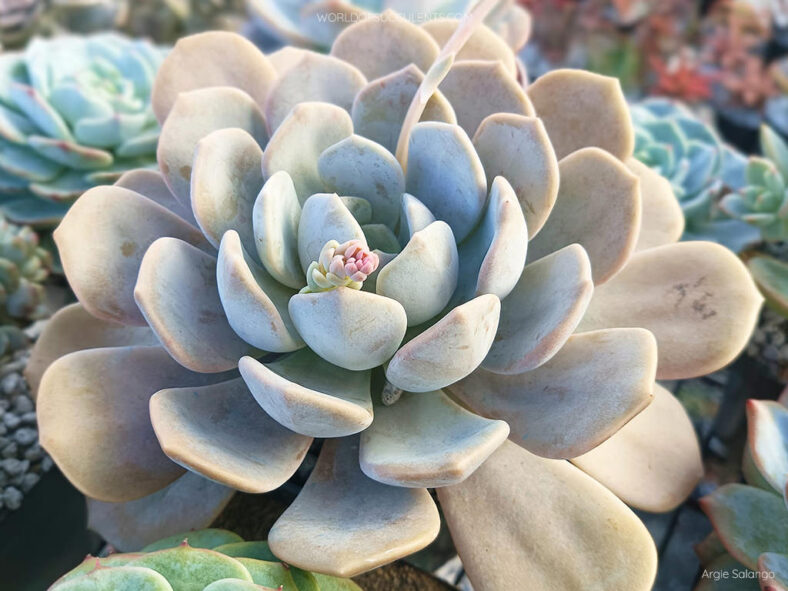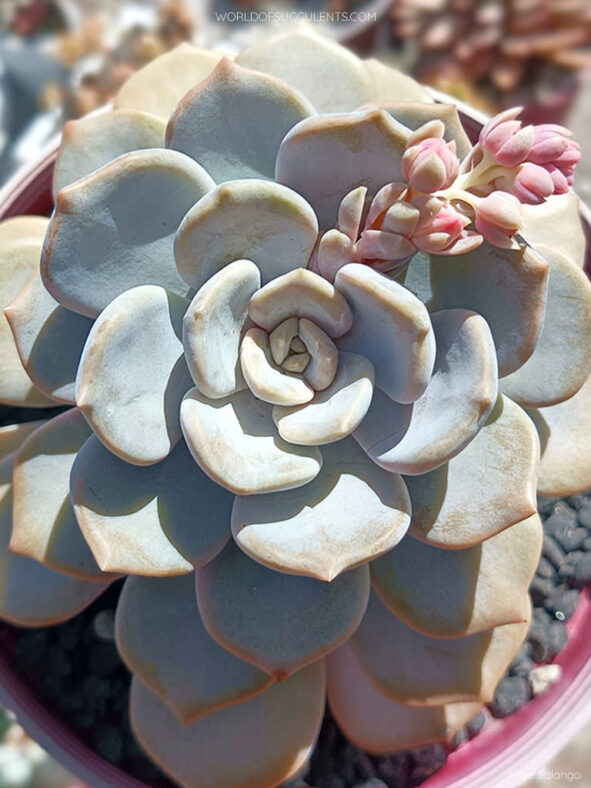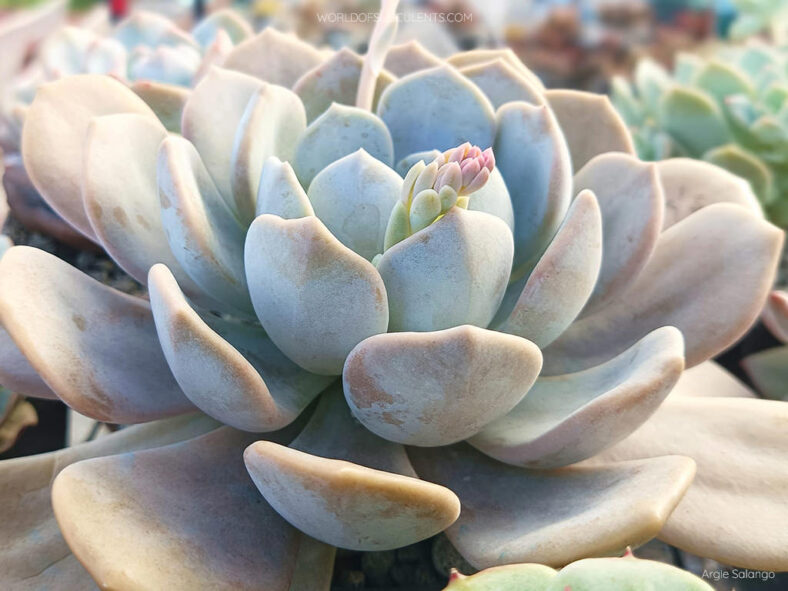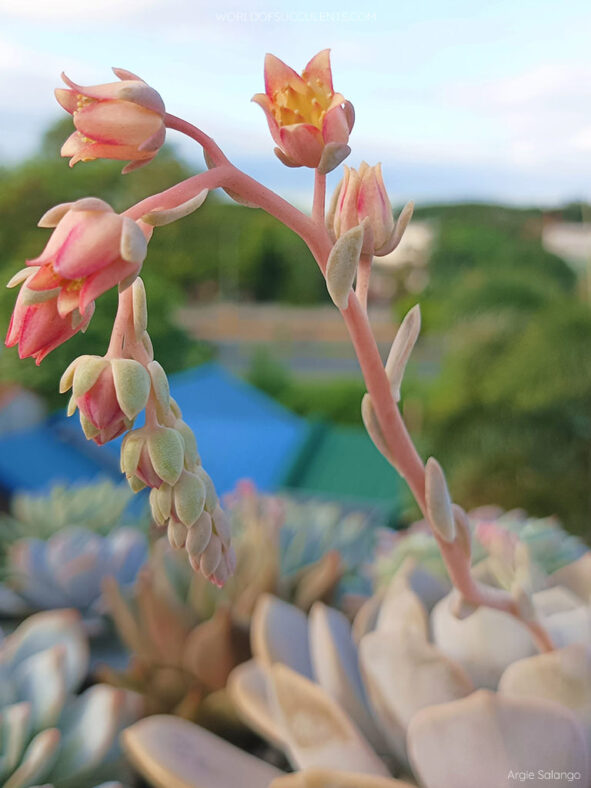×Graptoveria 'Tiramisu' is an easy-care and low-maintenance plant. Its lovely pastel colors and cute compact rosette shape make it a delightful addition to any collection.
Scientific Name
×Graptoveria 'Tiramisu'
Scientific Classification
Family: Crassulaceae
Subfamily: Sempervivoideae
Tribe: Sedeae
Nothogenus: ×Graptoveria
Origin
×Graptoveria 'Tiramisu' is a Korean hybrid that results from a cross between ×Graptoveria 'Margaret Rose' and Echeveria laui.
Description
×Graptoveria 'Tiramisu', usually sold as Echeveria 'Tiramisu', is a lovely small succulent that forms rosettes of spoon-shaped leaves with a pointed tip. The leaves are milky green, covered with a thick, waxy coating that gives the plant a pastel, frosted appearance. When the plant is stressed by direct sunlight, the tips and edges of the leaves take on a pink hue.
In spring, ×Graptoveria 'Tiramisu' produces bell-shaped flowers on arching stalks with a few bracts. The flowers have yellow petals with red tones and sepals the same color as the leaves.

How to Grow and Care for ×Graptoveria 'Tiramisu'
Light: ×Graptoveria 'Tiramisu' thrives in full sun to partial shade. Place it near the brightest window in your home. If you plan to move the plant outdoors in the spring, do so gradually to avoid exposing it to intense afternoon sunlight.
Soil: A well-draining soil is crucial for the healthy growth of this succulent. While many growers prefer to create their own soil mix, commercially available soil mixes designed for succulents are also suitable.
Temperature: While ×Graptoveria 'Tiramisu' can tolerate heat, intense sunlight with high temperatures may cause damage, especially if there is insufficient air circulation. This tender succulent should be brought indoors if there is a risk of freezing temperatures. It is hardy in USDA Plant Hardiness Zones 10a-11b, which have average annual extreme minimum winter temperatures ranging from 30°F to 50°F (-1.1°C to 10°C).
Watering: This plant prefers the "soak and dry" method during the growing season. Water it deeply, then allow the soil to dry out completely before watering again. In winter, water sparingly, just enough to keep the plant from shriveling. Above all, if you have a saucer under the pot, be sure to empty the excess water.
Fertilizing: Although ×Graptoveria 'Tiramisu' can grow well without fertilizer, it may benefit from extra nutrients. If you choose to fertilize, do so only during the growing season and use a water-soluble fertilizer diluted to half the recommended strength.
Repotting: If you are growing this plant in a container, repot it as needed in spring or early summer. Ensure the soil is dry before repotting and always use a container with drainage holes.
Propagation: The easiest way to get a good-sized new plant is by offsets, but ×Graptoveria 'Tiramisu' is also easy to propagate by leaves. Spring and summer are the best times to separate offsets.
Learn more at How to Grow and Care for Echeveria.
Toxicity of ×Graptoveria 'Tiramisu'
×Graptoveria 'Tiramisu' has no toxic effects reported. But although it is safe for growing around children and pets, eating the plant is not advisable.
Links
- Back to nothogenus ×Graptoveria
- Succupedia: Browse succulents by Scientific Name, Common Name, Genus, Family, USDA Hardiness Zone, Origin, or cacti by Genus
Photo Gallery
Click on a photo to see a larger version.


